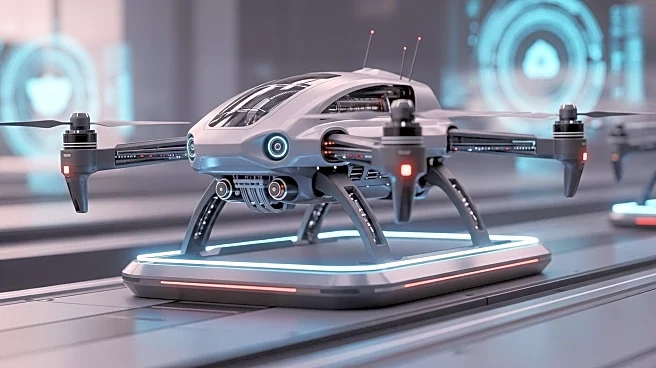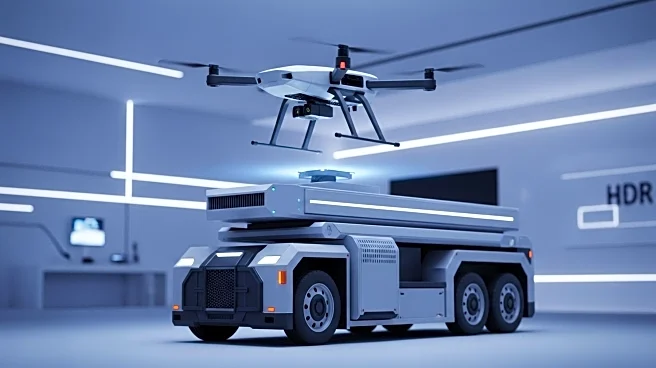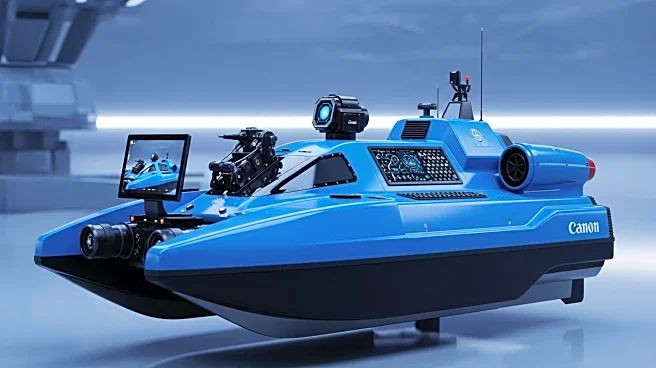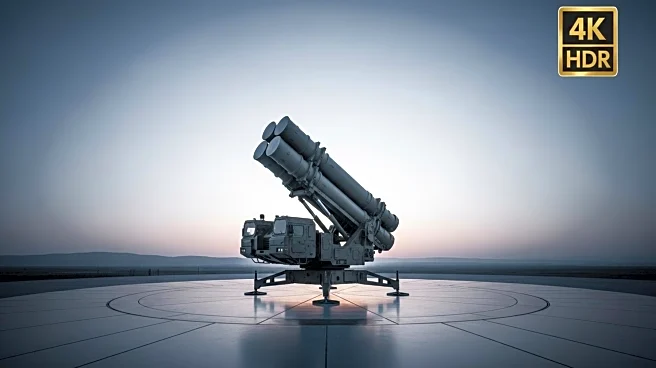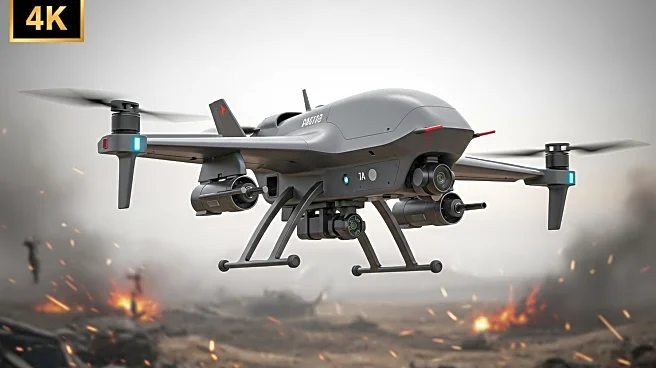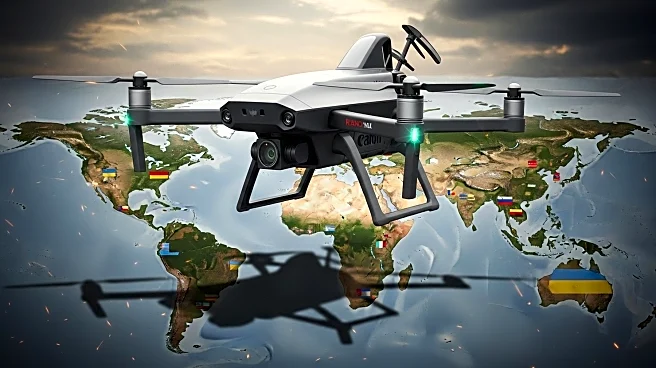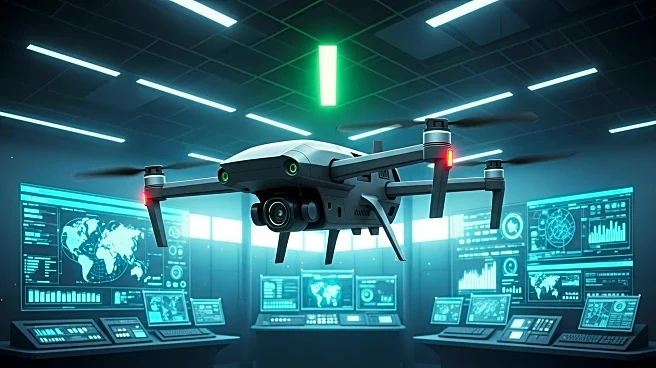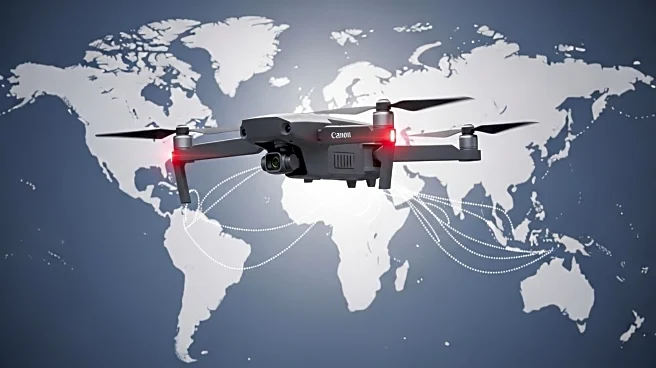What's Happening?
Teledyne Flir, a U.S.-based sensor specialist, has unveiled a new drone-in-a-box system called SkyCarrier, designed for launching and recovering drones from moving platforms such as boats and vehicles. This system can autonomously deploy and retrieve SkyRaider R80D and SkyRanger R70 drones while moving at speeds up to 50 km/h. The SkyCarrier can be optionally tethered, allowing extended operational time up to two days at altitudes of 100 meters. This innovation addresses battlefield demands for rapid deployment and recovery of drones, as seen in conflicts like Ukraine. Teledyne Flir has collaborated with Ukrainian partners to enhance drone capabilities, including radio-silent operations and tethered functionality.
Why It's Important?
The SkyCarrier system represents a significant advancement in drone technology, offering military and security forces enhanced operational flexibility. By enabling drones to be launched and recovered from moving platforms, Teledyne Flir addresses the need for rapid and safe deployment in dynamic environments. This capability is crucial for modern warfare, where speed and adaptability are key. The system's optional tethering feature extends operational time, providing strategic advantages in surveillance and reconnaissance missions. As drone technology continues to evolve, innovations like SkyCarrier could influence military tactics and procurement decisions, driving further advancements in unmanned systems.
What's Next?
Teledyne Flir may explore opportunities to deploy the SkyCarrier system in various military and security operations, potentially expanding its market presence. The company could seek partnerships with defense agencies interested in integrating this technology into their operations. As the system gains traction, Teledyne Flir might focus on further enhancements, such as increased speed and payload capacity. The success of SkyCarrier could prompt competitors to develop similar systems, leading to increased innovation and competition in the drone industry. Military forces worldwide will likely assess the system's capabilities, influencing future procurement and deployment strategies.


